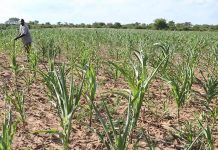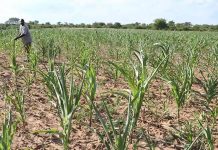The drought situation is worsening in Zimbabwe where at least 7,7 million people need urgent food aid as some parts of the southern African nation have so far received insignificant rains for large-scale and subsistence farming.
The World Food Program (WFP) says the climate change-induced dry spell is affecting people in urban and rural areas with indications that more people are set to seek drought relief aid this year.
More than 34,000 cattle have succumbed to the drought, which has resulted in poor harvests in four of the last five crop seasons.
The Zimbabwean government, according to Agriculture Minister,Perrence Shiri, is left with 100,000 tonnes of maize in its strategic grain reserves. The country consumes about 80,000 tonnes of maize per month. WFP deputy country director Neils Balzer says Zimbabwe is facing one of the worst food crises in years.
“As the World Food Program we are very worried about the situation on the ground. There is a number of compounding factors that have been coming together over the past, I would even say years. First of all out of the last five years Zimbabwe has seen four droughts, so, that’s being climate change-induced changes, less rain, erratic rain, late start of the season, etc, that has affected four out of five previous harvests. The most recent one 2018/2019 harvest was also affected and the country has only produced half of the cereals that it needs to sustain itself.”
Balzer says some Zimbabweans can hardly have a decent meal a day due to the severe drought and current harsh economic situation in Zimbabwe.
“… An assessment that was done in 2019 has revealed that about 7.7 million or just under eight million people are in need of food assistance during the peak of the lean season. The peak of the lean season is what we call from January to March/April just before the next harvest comes in, that’s when hunger is at its peak and most people have run out of their own food stocks. So, these compounding factors have driven up the numbers.






